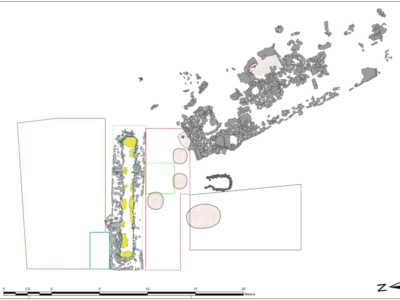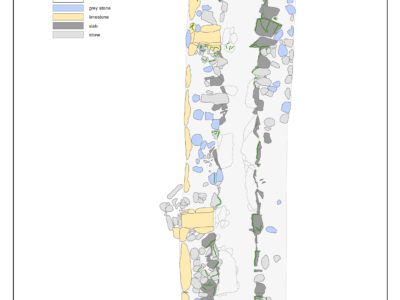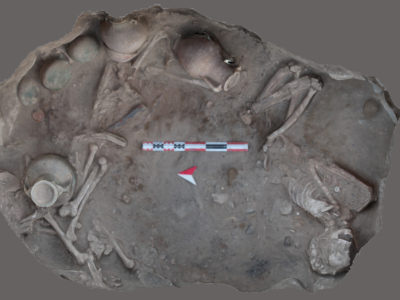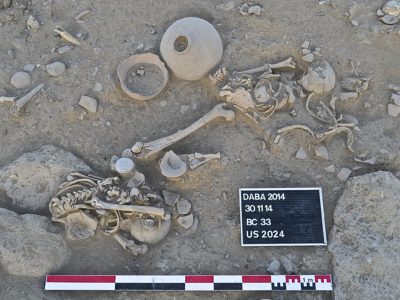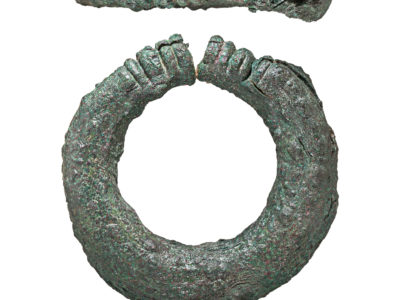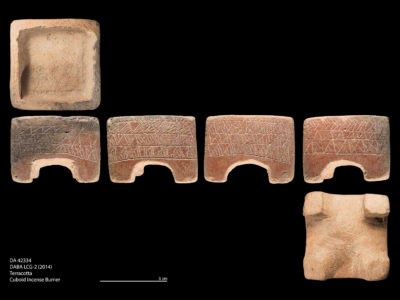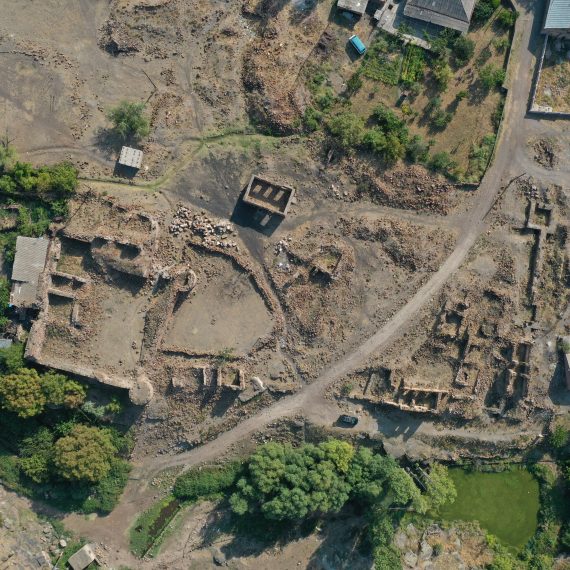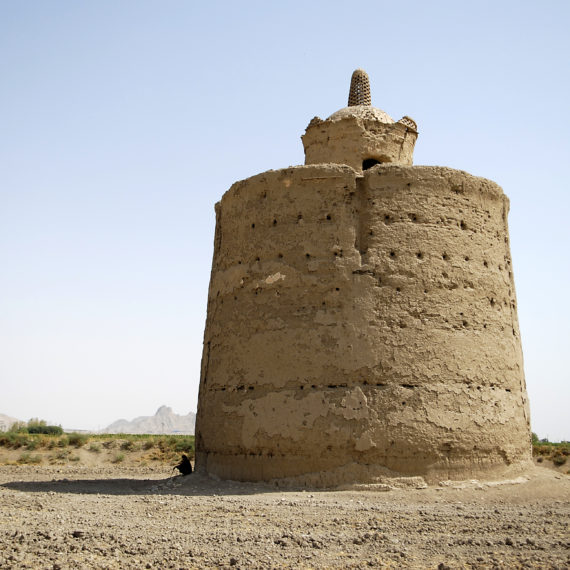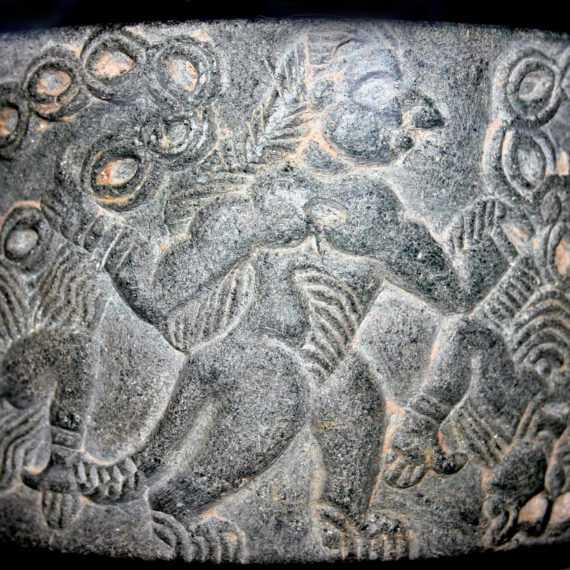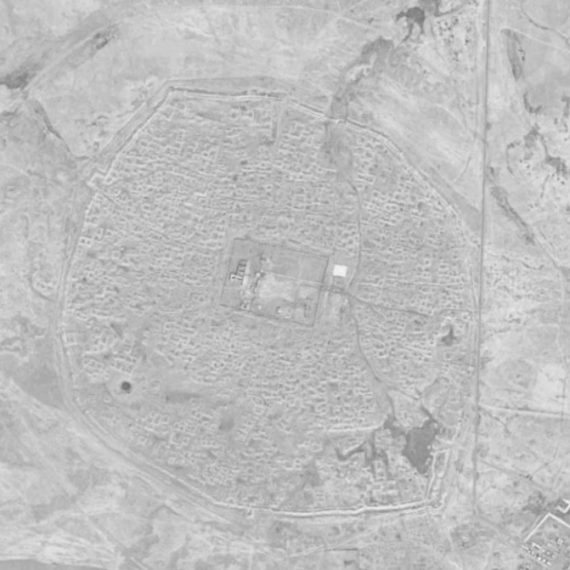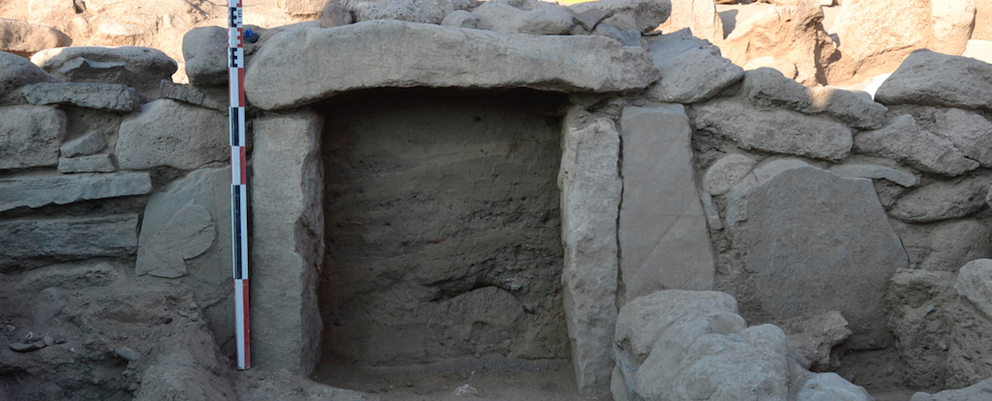
Italian Archaeological expedition to the burials site of Daba (Sultanate of Oman)
Dal 2013 la missione archeologica italiana è impegnata nello scavo del complesso funerario di Daba nella Penisola di Musandam (Oman), in virtù di un accordo di collaborazione con il Ministero della Cultura del Sultanato dell’Oman che ha affidato la direzione delle ricerche al Dr. Francesco Genchi.
La scoperta accidentale del sito ha richiesto un primo intervento degli archeologi locali, a cui ha fatto seguito l’impegno della missione italiana a partire da aprile 2013. Sono state condotte tre campagne di scavo con il supporto totale del Ministero omanita. Dal 2017 la Missione rientra nelle attività della Sapienza Università di Roma e gode del patrocinio del Ministero degli Affari Esteri e della Cooperazione Internazionale, mentre dal 2018 è supportata da ISMEO-Associazione Internazionale di Studi sul Mediterraneo e l’Oriente.
Il complesso funerario di Daba è attualmente costituito da due grandi tombe collettive (LCG1 e LCG2), da una tomba partica e da diverse fosse rituali ricche di oggetti in bronzo, pietra, ceramica (vasellame e armi in ottime condizioni di conservazione e di pregevole fattura). Prospezioni geofisiche hanno evidenziato la presenza di quelle che sono state interpretate come ulteriori grandi tombe collettive. I due grandi monumenti funerari sono stati utilizzati in un arco di tempo che va dal Bronzo Tardo (1600- 1350 a.C.) fino all’Età del FerroII/III (circa 600 a.C.).
Le evidenze archeologiche suggeriscono che tutta l’area funeraria possa essere stata utilizzata come tributo monumentale ad alleanze tribali risalenti alla fine del II millennio a.C. Le tombe collettive sono state indagate durante cinque campagne di scavo (dal 2013 al 2018). Durante la seconda missione sono emerse le strutture riferibili alla seconda grande tomba (LGC2), che, seppure non ancora completamente indagata, ha restituito un numero cospicuo di oggetti e contesti deposizionali per lo più intatti.
Mentre LCG-1 (14 x 3,5 metri) ha fornito principalmente dati quantitativi sugli oggetti e sui reperti osteologici, (si tratta dei resti di almeno 188 individui e quasi 3600 oggetti di fattura pregiata tra vasellame in bronzo e steatite, daghe, bracciali, punte di freccia, medaglioni decorati in conchiglia e 5000 perline realizzate con differenti materiali) la LCG-2 (23 x 6 metri) ha permesso valutazioni e ipotesi su quello che appare un complesso rituale funerario.
Al momento LCG2 ha restituito migliaia di oggetti (più di 3000 quelli di pregio), spesso in stretta associazione con resti umani e animali e in essa sono state riconosciute diverse fasi di frequentazione, restauro e riorganizzazione delle strutture come l’aggiunta di camere esterne o localizzate lungo il perimetro originale.
Le dimensioni delle grandi tombe collettive, insieme all’alto numero di individui e alla grande quantità di reperti archeologici contenuti in essa, sottolineano l’importanza di Daba come area sacra. L’assenza di una selezione per genere ed età degli inumati, sia per quanto riguarda le deposizioni primarie che per quelle secondarie, testimonia inoltre la grande valenza aggregativa della struttura funeraria.
Direttore: Francesco Genchi, Alfredo Coppa
Nazione: Sultanato dell’Oman
Periodo: 2013 – in corso
(ENG)
The funerary complex of Daba is currently composed of two large collective tombs (LCG1 and LCG2), a Parthian grave and several ritual pits filled with objects made of bronze, stone, ceramics (containers and weapons in excellent conditions of conservation and fine manufacture). Geophysical surveys have highlighted the presence of further large collective tombs. The two great funerary monuments were used over a period of time ranging from the Late Bronze Age (1600- 1350 BC) to the Iron Age II / III (around 600 BC).
Archaeological evidences suggest that the entire funerary area may have been used as a monumental tribute to tribal alliances dating back to the end of the 2nd millennium BC. The collective graves were investigated during five excavation campaigns (from 2013 to 2018). During the second mission emerged the structures referable to the second great tomb (LGC2), which, although not yet fully investigated, has returned a large number of objects and depositional contexts mostly intact.
While LCG-1 (14 x 3.5 meters) has mainly provided quantitative data on objects and osteological findings, (these are the remains of at least 188 individuals and almost 3600 valuable objects including bronze and softstone containers, daggers, bracelets, arrowheads, inlaid shell medallions and 5000 beads made of different materials), the LCG-2 (23 x 6 meters) has allowed evaluations and hypotheses on what appears to be a multifaceted funeral ritual.
At the time LCG2 has yielded thousands of objects (more than 3000 valuable ones), often in close association with human and animal remains and have been recognized different phases of attendance, restoration and reorganization of structures such as the addition of external rooms or located along the original perimeter.
The dimensions of the large collective tombs, together with the high number of individuals and the great quantity of archaeological finds contained in it, underline the importance of Daba as a sacred area. Moreover, the absence of a selection by gender and age of the individuals, both as regards primary and secondary depositions, shows the great aggregative value of the funerary structure.




